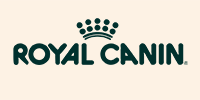Dental disease affects 80% of adult pets and can lead to bad breath, painful teeth, and potentially serious health problems if left untreated. In addition to at home care like brushing, dental chews, and a vet recommended dental diet, yearly cleanings are recommended for adult pets. These cleanings will remove tartar buildup above and below the gumline before in develops into dental disease.
Here’s what happens during a dental cleaning:
The night before the procedure
Your vet team will provide instructions for the night before the cleaning. Typically, you’ll feed your pet their usual evening meal, then fast them overnight, ensuring they have no food in the morning; however they can still drink water.
Clinic check-in
Upon arrival, your vet team will talk you through the procedure and answer any questions that you may have. They’ll confirm your contact details, have you sign a consent form, and then take your pet to the ward.
General examination
Before your pet undergoes a general anaesthetic, your vet will conduct a thorough examination to check their overall health. They’ll also run some pre-anaesthetic tests to make sure it’s safe for your pet to undergo anaesthesia. This usually involves blood tests to check the liver and kidneys, and listening to their heart and lungs. The results will help tailor the anaesthetic plan for your pet. If there are any concerns, your vet will discuss them with you.
Putting your pet under
Once cleared for the procedure, your pet will receive general anaesthetic. This ensure they remain still and pain-free while their teeth are being cleaned. A tube will be placed in their windpipe to ensure they breathe comfortably and to deliver the anaesthesia gas. The vet team will monitor your pet’s vital signs, like heart rate, respiratory rate and blood pressure, throughout the procedure.
Emma Cox, Practice Manager of Aberfoyle Hub Veterinary Clinic, explains, ‘We need to sedate or anesthetise pets because they can’t tell us when they’re feeling pain, so it’s much gentler for them to do it this way.
Anaesthesia is really important to minimise anxiety around touching the mouth, and it allows us to properly examine the mouth to make sure that we’re getting a really good look.
Anaesthesia keeps them nice and comfortable and asleep during the procedure, so they won’t remember what’s happened, and they’ll wake up with a nice clean mouth.”
Dental examination and X-rays
Before the cleaning begins, your vet will examine each tooth and may take X-rays to check the tooth roots and surrounding bone. X-rays reveal problems that aren’t visible to the naked eye, like abscesses or bone loss.
Scaling the teeth
The first step of the cleaning is scaling, which removes plaque and tartar from the teeth. Your vet will use an ultrasonic scaler and hand instruments to clean above and below the gum line, this is essential for preventing gum disease and other dental issues.
Polishing and fluoride treatment
After scaling, the teeth are polished to remove any remaining plaque and smooth the tooth surfaces. This helps prevent future plaque buildup. A fluoride treatment may also be applied to strengthen the teeth and reduce sensitivity.
Recovery and aftercare
After the cleaning, your pet will be moved to the recovery ward and monitored closely as they wake up from the anaesthetic. The team will call you to let you know everything went well and arrange a pick-up time.
At pick-up, the team will go through aftercare instructions with you which will either be printed off or emailed to you. Generally, you’ll be encouraged to feed your pet soft food for the first few days and keep them nice and warm for the night.
Stay on top of your pet’s dental health with a FREE dental assessment and find out if your clinic offers the Best for Pet Wellness Plan to save $250 on a yearly dental cleaning.







